
MEAL PREPARATION,
PART I
UNIT OVERVIEW: Using proper preparation techniques enables you to prepare foods in a healthier manner. To get the most nutrients, food must be stored, handled, and prepared properly.
 Plan ahead. During this unit you will
prepare two different food recipes. Look over the recipes and decide which one
you will make. Selecting the recipes now will give you time to buy ingredients
so they are on hand when you are ready to prepare the food. To print out all of
the recipes click on the PDF File.
Plan ahead. During this unit you will
prepare two different food recipes. Look over the recipes and decide which one
you will make. Selecting the recipes now will give you time to buy ingredients
so they are on hand when you are ready to prepare the food. To print out all of
the recipes click on the PDF File.
Directions
for printing a PDF File
Recipe
Options
● Remember common abbreviations used in cooking:
|
t or tsp |
teaspoon |
|
T or Tbsp |
Tablespoon |
|
C |
cup |
For additional abbreviations click on the PDF File.
●When baking times in recipes are ranges (15-20 minutes), set your timer for the shorter amount of time. You can always add more time. If you set the timer for 20 minutes and it is too long, you cannot “unbake” the food.
●When a recipe calls for softened margarine, it does not mean melted.

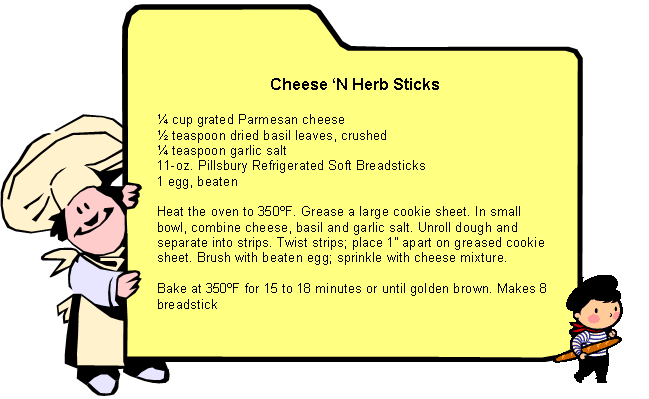

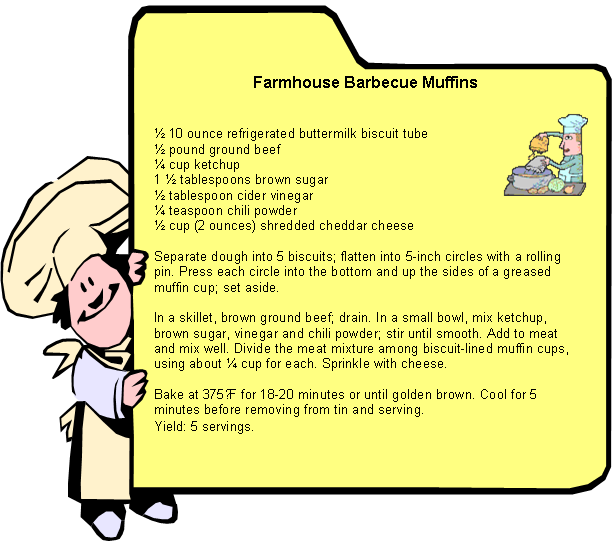
![]()
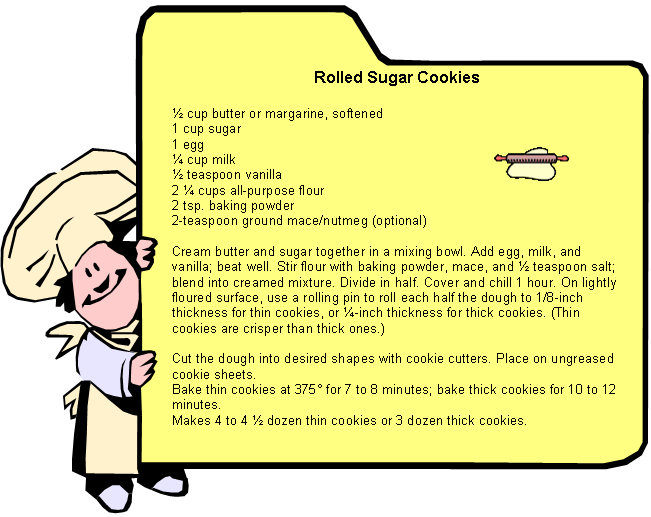
![]()
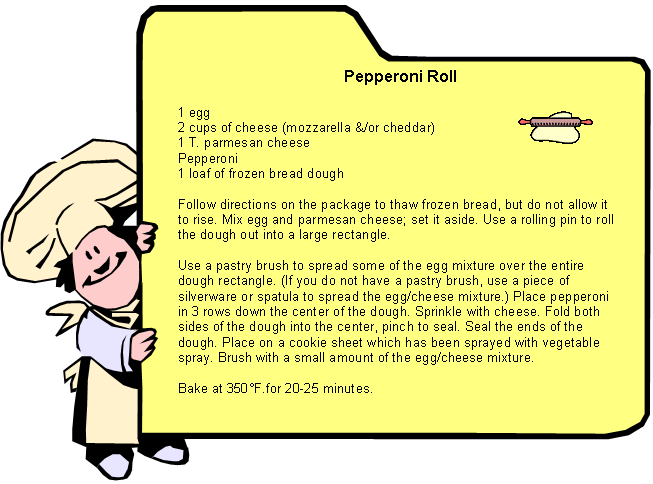
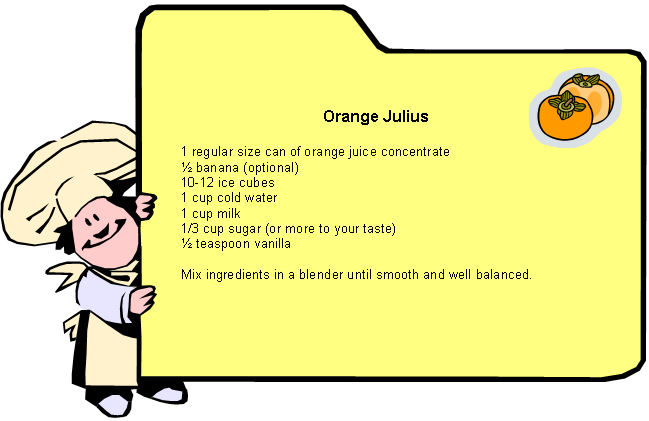
|
Key Terms |
||
|
Food labels |
Menu |
Entrée |
|
Recipes |
Yield |
Staples |
|
Pull date |
Unit pricing |
National brands |
|
Store brand |
Generic brands |
Meat |
|
Wholesale cuts |
Retail cuts |
Organ meats |
|
Poultry |
Fish |
Fillet |
|
Drawn fish |
Fish steaks |
Dressed fish |
|
Moist heat |
Dry heat |
Cooking in fat |
|
Pressure cooking |
Boiling |
Poaching |
|
Stew |
Steam |
Braise |
|
Roast |
Broil |
Sauté |
|
Deep fat fry |
Stir fry |
Coagulate |
Nutritional
Information
Evaluating sources of nutritional information and examining techniques for preparing food are important parts of healthy eating. The Nutrition Labeling Act of 1990 calls for nutrition labeling on most food products. The act also defines terms so they mean the same thing when they are used by different food processors. Some terms include: light and high fiber.
The label is a pretty accurate source of information about nutrients. The Cooperative Extension Service in your state is also a reliable source of nutrition and food preparation information. Their information has been researched and used in everyday living.
The way you prepare foods is based, at least partially, on your cultural background. You often prepare foods the same way they were prepared for you at home. If you are health conscious, you prepare food so as many nutrients as possible remain in the food. You also cook without adding a lot of fat. Equipment you use in food preparation and the money you budget for food impact the foods you select and how you prepare them.
Food
Labeling
Food labels are extremely important. One main piece of information on the label tells what is inside of the container. Imagine opening the kitchen cupboard to take out a can of beans for chili only to discover someone has removed all the labels. Other than judging from the size of the can, it is difficult to know if you selected a can of green beans, kidney beans, corn, or sloppy joe sauce.
Labels give information about how the food is packed. In the past, manufacturers used terms such as “lite” to mean whatever they wanted. Now the federal government has guidelines defining what each term means. Here is an example. Light indicates the food has been changed and has 1/3 fewer calories or ½ the fat it originally contained. Light also indicates the sodium content of low-fat, low-calorie food has been cut in half.
The label also tells how much food is in the container. Amounts may be listed by weight or by volume, such as cups. Names and addresses of manufacturers, packers, or distributors appear on labels, giving you a way to contact them should you have questions or problems with their products. All processed and packaged foods are required by law to have ingredients listed on labels. Ingredients are listed in order by weight. The first ingredient is always the largest amount.
Many raw foods and 90 percent of processed foods contain nutrition labeling under the heading of “Nutrition Facts.” This section indicates the serving size and how many servings are in the container. Nutrient and calorie information refer to the amount per serving, not per container.
Over 300 foods are excused, or not required by the Food and Drug Administration to list ingredients, because manufacturers have agreed to a standard recipe. Foods excused include jelly, tomato products, cheese, and margarine.
Food-borne
Illnesses
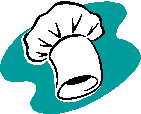 Proper
food preparation, as well as the safe storage of food, affects the
wholesomeness of the food. Foodborne
illnesses are more likely to be avoided if you always handle food on clean
surfaces, use clean equipment to prepare food, and wash your hands before and
after handling food. Following safe storage guidelines before cooking food and
with leftovers helps prevent food-borne illnesses.
Proper
food preparation, as well as the safe storage of food, affects the
wholesomeness of the food. Foodborne
illnesses are more likely to be avoided if you always handle food on clean
surfaces, use clean equipment to prepare food, and wash your hands before and
after handling food. Following safe storage guidelines before cooking food and
with leftovers helps prevent food-borne illnesses.
Mealtime is an opportunity for family members to visit with one another and share their activities for the day. Food preparation tasks can be shared among family members and give them opportunities to work together. Sharing also eliminates making food preparation the sole responsibility for one person.
![]() Food Basics: Food Safety (07:39)
Food Basics: Food Safety (07:39)
![]() Go to Questions 1-6.
Go to Questions 1-6.
Cut the
Fat, Saturated Fat, and Cholesterol
When you prepare
meals for yourself, your family, or friends, try these suggestions for lowering
fat content.
ü Season vegetables with herbs and spices instead of butter or sauces.
ü Steam, bake, or boil foods making it unnecessary to add butter.
ü Stir fry vegetables and meat in a small amount of fat.
ü Use oil instead of shortening.
ü Use skim or low fat milk, instead of whole milk, in puddings, sauces, and soups.
ü Select lean cuts of meat.
ü Roast, bake, or broil meat, fish, and poultry.
ü Limit using egg yolks that contain cholesterol.
ü If a recipe calls for one egg, try substituting two egg whites instead.
ü Instead of using sour cream or mayonnaise, use low fat yogurt, blended low fat cottage cheese, or buttermilk.
ü Trim visible fat off meat before cooking it.
ü Chill meat or chicken broth until the fat becomes solid on top of the broth. Skimming off the hard substance eliminates some fat.
ü Cook meat, poultry, and fish on a rack in a pan to allow fat to drip off and to prevent the food from sitting in the fat and absorbing it.
ü Remove the skin from poultry before baking it.
ü Substitute lemon juice for oil-based salad dressing on salads

Cut the
Fat When Eating Out
ü Select a baked potato or side salad rather than French fries. Toppings such as broccoli, chives, or salsa add less fat than butter, cheese, or sour cream.
ü Choose meat, fish, or poultry that has no breading.
ü When eating Mexican foods, avoid foods with lots of cheese.
ü Select pizza topped with mushrooms, green peppers and onions instead of pepperoni and sausage.
ü At the salad bar, avoid salads, such as potato or pasta salad, made with mayonnaise or oil.
ü Substitute low-fat or fat-free frozen yogurt for milkshakes.
Planning
Meals

Planning meals a day or week in advance helps assure you have necessary ingredients, that the meal will be nutritious, and that the meal is within your food budget. A menu is a list of foods included in the meal. Starting with the main dish, also known as the entrée, is suggested. Then you can think about side dishes to complement the entrée.
When planning meals,
consider the following:
Ø The number of people to be served
Ø Serving sizes. Remember, children need smaller servings than teenagers.
Ø Will everyone eat at the same time or will some eat later after a sports practice or other activity? If this is the case, the food must be kept warm for a period of time.
Ø What foods do family members like?
Ø Do family members have special diets?
Ø Do any family members have food allergies?
Ø Consider the number of servings recommended in each area of MyPyramid.
Ø Does the meal meet the nutrition needs of family members?
When planning meals, include a variety of colors, sizes or shapes, temperatures, flavors, and/or textures. Meals with all white foods or all hot foods are boring. A variety in each area is much more appealing.
![]() Go to Questions 7-20.
Go to Questions 7-20.
Try these time-saving
tips as you prepare meals.
v When possible chop, slice, or dice foods ahead of time and store them until you use them.
v When cooking, prepare extra portions and freeze them for a time you are busy.
v Prepare extra portions of the entrée to use at another meal as leftovers or part of another dish. Extra pot roast can be used for vegetable soup.
v One dish meals often save time.
v Collect favorite family recipes that can be prepared in 30 minutes or less.
v Discuss sharing meal preparation with family members so the person with extra time
might get the meal started or cooked that day.
Four factors to
consider as you plan meals:
- When time is limited, plan meals that require little preparation or short cooking times.
- Consider your food preparation skills. As a beginner, you should start with foods easy to prepare. As your skills become more advanced, try new and more complicated dishes.
- Plan meals that are nutritious but within the family budget.
- Prepare foods for which you have proper equipment or utensils. Often suggestions for making substitutions are printed in cookbooks. For example, if you are working with chocolate, and the recipe requires a double boiler, you can create your own by using two pans and setting the smaller inside the larger one. Put water in the outside pan, and then place the smaller pan with the chocolate inside it. The water serves as a buffer, and the chocolate does not scorch as easily as it would if you had the pan sitting directly on the burner.
Preparing Meals

After selecting a menu, you still have decisions to make. For example, if you opt to serve cake for dessert, will you make it from scratch where you read a recipe, measure, and add
ingredients yourself? Will you use a cake mix where you only add a couple ingredients? Will you buy a cake already made? Each choice has advantages and disadvantages. Making a cake from scratch is usually cheaper, but it takes more time. The cake mix is more expensive, but it takes less time. Buying a prepared cake costs more, but it does not require any work.
Convenience foods are usually more costly meals, but they do save time. Convenience foods may contain unwanted ingredients such as sodium or fat.
![]() Go to Questions 21-28.
Go to Questions 21-28.
Recipe
Selection
Preparing foods from scratch requires recipes. A recipe lists ingredients, amounts of each ingredient, preparation directions, and baking or cooking instructions.
Where can you find
recipes? Here are some ideas.
![]() Cookbooks offer lots of recipes. A cookbook may
be specialized and include only one type
of recipes such as desserts, or it may be a general cookbook including recipes
for appetizers, main dishes, salads, meats, casseroles, etc.
Cookbooks offer lots of recipes. A cookbook may
be specialized and include only one type
of recipes such as desserts, or it may be a general cookbook including recipes
for appetizers, main dishes, salads, meats, casseroles, etc.
![]() Newspapers and magazines often carry recipes. Be
careful the first time you use each recipe. Editing errors may result in
ingredients being omitted or measurements typed incorrectly. The first you time
you prepare a new recipe should probably not be a time you have a large number
of guests coming for dinner.
Newspapers and magazines often carry recipes. Be
careful the first time you use each recipe. Editing errors may result in
ingredients being omitted or measurements typed incorrectly. The first you time
you prepare a new recipe should probably not be a time you have a large number
of guests coming for dinner.
![]() The food package may have a recipe. For example,
a box of Rice Krispies includes a recipe for Rice Krispie treats. A box of Chex
cereal has a recipe for Chex Party Mix.
The food package may have a recipe. For example,
a box of Rice Krispies includes a recipe for Rice Krispie treats. A box of Chex
cereal has a recipe for Chex Party Mix.
![]() Family and friends often share recipes they have
tried and like.
Family and friends often share recipes they have
tried and like.
Recipes come in two forms. The standard recipe form has amounts and ingredients listed first followed by steps telling you how to combine ingredients, prepare the pan, temperatures to use, and cooking or baking times. The narrative recipe form includes the same information but in paragraph form.
All recipes should
include the following information:
ü A list of ingredients
ü Amounts of each ingredient
ü Step-by-step directions for combining ingredients
ü Equipment needed
ü Yield or the number of servings the recipe makes
ü Times for cooking, chilling, marinating, etc.
ü Equipment settings, such as the oven temperature
![]() Go to Questions 29-33.
Go to Questions 29-33.
Grocery Shopping
 When
you grocery shop, carry a list to serve as a reminder of what you need and to
take advantage of advertised specials. Sticking to a list helps you avoid impulse
buying. Throughout the days before you shop, review your menus for the week to
see what you need and add the items to your list. Check your supply of staples,
the food items you use all the time, such as flour or salt. They keep for a
period of time and are good to have on hand.
When
you grocery shop, carry a list to serve as a reminder of what you need and to
take advantage of advertised specials. Sticking to a list helps you avoid impulse
buying. Throughout the days before you shop, review your menus for the week to
see what you need and add the items to your list. Check your supply of staples,
the food items you use all the time, such as flour or salt. They keep for a
period of time and are good to have on hand.
Organize your grocery list by thinking about the store layout where you shop. Another helpful tip is to group like things together. For example, list all frozen foods together and all cereal items together.
Choosing Groceries
 At
the grocery store, you have decisions to make. Produce is fresh vegetables or
fruit that begins to loose nutrients as soon as it is picked, so choose produce
items that are firm, have good color, and show no evidence of bruising or
cracks. Fruit that is relatively heavy for its size often indicates the fruit
will be juicy. Seasonal produce, more plentiful at certain times of the year,
may not be available at other times, or if it is available, it is more
expensive.
At
the grocery store, you have decisions to make. Produce is fresh vegetables or
fruit that begins to loose nutrients as soon as it is picked, so choose produce
items that are firm, have good color, and show no evidence of bruising or
cracks. Fruit that is relatively heavy for its size often indicates the fruit
will be juicy. Seasonal produce, more plentiful at certain times of the year,
may not be available at other times, or if it is available, it is more
expensive.
Packaged foods may have dates stamped on the packaging. The pull date indicates the last day food can be sold by the store. In other words, it is the “sell by” date or when the food must be pulled from the shelf. Meat and dairy products have a pull date because the quality does not last for a long period of time. You can still use the food for a few days because the date allows time for consumers to have it at home. The expiration date or “use by” date is the last day a food is considered fresh. The food may still by good, but it is not as fresh as it was originally.

Unit pricing is a method to help consumers compare different products or different sizes of the same product. Unit price is the price per ounce, per pound, or some other unit of measure (Glosson). Unit prices usually appear on the front edge of the shelf below the product. You can calculate unit price by dividing the total cost by the number of ounces, pounds, etc. For instance, if a pound of hamburger costs $2.40, you divide $2.40 by 16 ounces to determine the cost per ounce. The answer is $.15 per ounce.
When you shop, do not select any of the following:
- Dented or bulging cans – the bulging may be caused by bacteria in the food.
- Cans with rust on the outside – the rust may also be on the inside.
- Frozen food that is spongy or wet— the food may be partially or completely thawed.
- Stains or irregular shaped packages of frozen food – this condition may result from thawing and refreezing and can affect the quality of the food.
- Packages of food that have been opened – the food have been altered in some way and not safe to eat.
While shopping, you select from various brands that fall into three categories. National brands are sold across the country and are usually more expensive because of national advertising costs. Store brands, specifically made for that store, are often cheaper than national brands. Generic brands are less expensive than the other two and have plain packaging. Quality may vary. Some foods, such as pasta, usually served with a sauce may be fine in generic brands. With foods such as ketchup, your family may prefer national brands.
Veal, lamb, pork and beef are meats usually available at local supermarkets. These meats come in various cuts from different sections or parts of the meat carcass (Glosson). The large sections, called wholesale cuts, are further divided into retail cuts. Meat labels identify the kind of meat, the wholesale cut, and finally the retail cut. Tender meat cuts often cost more.
Lamb, beef, and veal meats are graded to indicate quality.
v Prime has the most marbling and is the most expensive. Marbling is fat spread throughout the meat.
v Choice is less expensive and has less marbling.
v Select (beef) or good (lamb or veal) has less fat marbling and is less expensive.
Heart, liver, and kidney are organ meats. Processed meats are seasoned, smoked, or prepared in some other method. Processed meats include hot dogs, lunch meats, and ham.
![]() Go to Questions 34-48.
Go to Questions 34-48.
Duck, turkey, goose, squab, and chicken are poultry. Poultry may be purchased whole, cut up, boneless, or ground. Whole chicken usually costs less, but you pay for the weight of bones as well as meat. Boneless poultry costs more, but there is little waste. Names on poultry indicate the age of the bird as well as an appropriate cooking method. For example, broilers or fryers are young tender birds that can be fried or broiled. Roasters are older birds with more developed
muscles and, therefore, often tough. Roasting is an appropriate preparation method as the water tenderizes the meat. Stewing chickens are the oldest and toughest poultry meat.
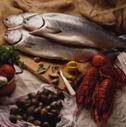
Fish in found in two categories –
saltwater or freshwater fish. Saltwater fish comes from the ocean and includes
fish such as tuna or 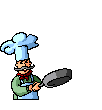 flounder. Freshwater fish, such as catfish or trout, comes
from streams and lakes. Fish may be purchased in a variety of forms.
flounder. Freshwater fish, such as catfish or trout, comes
from streams and lakes. Fish may be purchased in a variety of forms.
Ø
Fillets are the sides
of the fish.
Ø
Drawn fish have the
scales and insides removed, but the whole fish is intact.
Ø
Steaks are sections
cut across the middle of the fish.
Ø
Dressed indicates the
tail, fins, head, insides, and scales have been removed.
Eggs come in six different sizes
varying from peewee weighing 15 ounces a dozen to jumbo weighing 30 ounces a
dozen. The most common sizes in supermarkets are large and extra large. Eggs
may be brown or white; both are good quality. Egg color is determined by the
kind of chicken they come from.
Always open the carton of eggs to
check for quality before you buy them. You do not want to purchase cracked eggs
or discover some eggs in the carton are missing.
![]() Go to Questions 49-55.
Go to Questions 49-55.
Cooking Methods
The three most common methods for cooking food are summarized below.
- The moist heat method uses water or steam to cook food. Moist heat is used for food such as rice because food becomes tender as it absorbs water. Moist heat also helps food flavors, such as those in soups or stews, blend together. Moist heat methods include:
- Pressure cooking – a pressure cooker seals and cooks food in steam under pressure to “speed up” the cooking process.
§ Boiling – cooking food so bubbles rapidly rise to the surface and break; some nutrients are lost in the water during the boiling process.
- Poaching – cooking whole foods in a small amount of simmering water; eggs are often cooked in this fashion.
- Stewing – cutting food in small pieces and cooking it in liquid
- Steaming – cooking food over hot water, but only the steam touches it; food loses fewer nutrients than in the boiling process.
- Braising – browning food and adding a small amount of liquid until it is cooked.
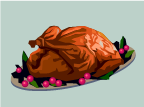
- Dry heat does not use water, and food is cooked uncovered. The food is brown and crisp on the outside and moist on the inside. Dry heat methods include:
§ Roasting and baking – cooking food in the oven in an uncovered pan. Baking usually refers to cakes and cookies, while roasting refers to meats.
§ Broiling – cooking food directly from a heat source. The heat may be either above (an oven broiler) or below the food (gas/charcoal grill). A broiler pan is used in the oven to allow juices and fats to drip away from the food.
- Cooking with fat – using fats, such as oil, shortening, or butter, to cook the food; nonstick cooking spray may replace the fats. Cooking with fats includes:
§ Sautéing or pan frying – cooking food in small amounts of fat over a medium heat.
Hint: If you are frying a food and the pan catches fire, cover the pan with a lid or pour salt or baking soda on the flame. Salt or baking soda deprives the fire of oxygen
and it will go out. Never add water because water and fat will not mix, and the hot
fat will start popping.
§ Deep-fat frying – cooking foods in enough fat to completely cover the food.
§ Stir-frying – cooking food quickly in a small amount of fat at a high temperature.
Grain products, such as rice and breakfast cereals, absorb all the moisture they are cooked in and do not lose nutrients.
Pasta, including macaroni, spaghetti, and noodles, is cooked in a large amount of water. Because the water is drained after cooking, some nutrients are lost. Pasta is ready to eat when it is softened but still firm. Over-cooking pasta destroys the texture and nutritive value. To help prevent loss of nutrients, do not rinse the pasta.
![]() Go to Questions 56-64.
Go to Questions 56-64.
Preparing Foods
Fresh fruits and vegetables should be washed under cool running water before you serve them. Some fruits turn a dark color after they have been cut. You can prevent this by sprinkling the fruit with “fruit fresh,” soaking it in lemon juice, wrapping it in plastic, or placing it in an airtight container.
Potatoes should be scrubbed with a vegetable brush.
Salad greens should be washed under cool running water and then drained. Tear lettuce into bite size pieces; cutting with a knife causes lettuce to bruise and turn brown. To prevent lettuce or other greens from wilting, add dressing just before you serve the salad.
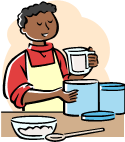
Fruits and vegetables cooked whole before being peeled lose fewer nutrients than after they were cut up and/or peeled. Using a small amount of water also reduces the loss of nutrients. Using a lid to keep the steam in the pan lessens the loss of nutrients.
Stir-frying vegetables is popular. Stir-frying is cooking vegetables or meats quickly in a small amount of fat. Cutting fruits or vegetables into fairly even pieces makes stir-frying or microwaving easier because foods cook in the same amount of time. With varied sizes, small pieces are done, and large ones need more cooking time.
To prevent the milk from scorching or proteins from becoming tough or rubbery (coagulating), use a low temperature. Cheese may become tough if overcooked, so use a low temperature and cut the cheese or grate it to quicken the melting time.
Cook meat at a medium temperature to prevent protein from toughing. Moist heat also helps tenderize meat. You can use dry heat with the broiler or oven for tender meat cuts. Fat-methods for cooking meats include: pan frying, deep fat frying, and stir frying.
You may cook eggs in several ways: poach, fry, boil in the shell (either soft or hard cooked), scramble, make omelets or bake.
![]() Go to Questions 65-75.
Go to Questions 65-75.

 |
| Unit 15 Meal Preparation, Part I (Puzzle) Worksheet |
| Unit 15 Meal Preparation (Advance Organizer) Worksheet |